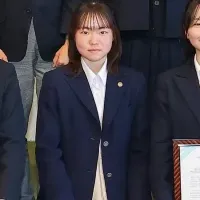
Exploring New Frontiers in Science Education with Vernier's Wireless Sensors
Discovering Real-World Applications with Vernier's New Sensors
Vernier Science Education is pioneering a fresh approach to science education with the introduction of two innovative wireless sensors—the Go Direct® 2-Axis Force Plate and the Go Direct Turbidity Sensor. These tools are designed to enhance learning experiences for high school and college students by providing them a means to explore scientific principles through hands-on investigations.
The Seamless Integration of Technology in Learning
According to Jill Hedrick, CEO of Vernier Science Education, these data-collection technologies are essential for students as they help bridge the gap between abstract concepts and practical applications. The Go Direct sensors ensure that students engage actively in their learning processes, enabling them to measure complex phenomena such as force interactions with precision.
The Go Direct 2-Axis Force Plate serves as a comprehensive tool that combines the functionalities of both a traditional force plate and an accessory for measuring lateral forces. This dual capability allows students to conduct experiments that evaluate friction, stepping, and jumping in a more nuanced way than single-axis devices. By doing so, students can analyze reaction forces involved in static systems and explore the biomechanics of movement more comprehensively.
Educators using the existing Go Direct Force Plate can also opt for the Lateral Force Accessory, which allows for an easy upgrade without requiring them to purchase completely new equipment. This flexibility ensures that educators can easily adopt new technologies into their lessons while maximizing their current resources.
Emphasizing Real-World Connections
The launch of the Go Direct Turbidity Sensor coincides with the need for students to understand environmental issues better. This sensor grants students the ability to analyze water samples, thereby integrating scientific inquiry with real-world environmental concerns such as water quality and pollution. Equipped to measure turbidity in freshwater and seawater, it uses Nephelometric Turbidity Units (NTU), aligning with the standards employed by many water quality organizations.
The straightforward setup of this sensor allows for data collection in field environments, like lakes and streams, as well as in classroom settings. By working on hands-on experiments related to Earth science and environmental studies, students can actively engage in comprehensive learning experiences that echo real scientific research.
Direct Connectivity and Convenience
True to Vernier's commitment to educational advancement, both sensors can connect effortlessly to students' mobile devices, Chromebooks™, or computers through the esteemed Vernier Graphical Analysis® app. This compatibility extends to both wired via USB and wireless through Bluetooth technology, catering to various classroom setups and preferences. The inclusion of rechargeable batteries ensures they're ready for operation whenever needed, enhancing convenience for educators during lectures.
Owning to Vernier’s strong emphasis on customer support, users can rely on comprehensive product backing and warranty services as they incorporate this technology into their educational frameworks.
Conclusion: Empowering Future Innovators
Vernier Science Education has long been a trusted name in STEM education, committing over 40 years to the enrichment of learning solutions. By integrating advanced technological tools such as the Go Direct 2-Axis Force Plate and the Go Direct Turbidity Sensor, the company reinforces its mission to foster a STEM-literate society capable of innovating and solving complex problems. As both these sensors begin shipping now, educators and students alike have new opportunities to engage deeply with science and technology, cultivating a new generation of informed, capable citizens.
For more information about these innovative products, visit Vernier Science Education.
Topics Other)










【About Using Articles】
You can freely use the title and article content by linking to the page where the article is posted.
※ Images cannot be used.
【About Links】
Links are free to use.